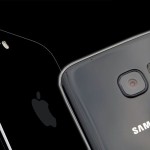
OUR EARLY VERDICT
- An interesting phablet with a decent slug of power, the HTC U Ultra’s design innovations will intrigue, but the all-new ‘AI’ component feels far too nascent to be called a killer feature.
FOR
- Attractive design
- Decent camera
- HTC Sense still a great UI
AGAINST
- Glass feels a little thin
- A lot of repackaged tech
- HTC Sense Companion limited
HTC is getting smarter – well, its phones are. The HTC U Ultra, which alongside the HTC U Play is another new line of handsets to wrap your head around, is a phablet that’s packing in some high-end specs and an all-new AI companion… and for something below a flagship price.
Before we get into the AI on board (which is infuriatingly, boringly, called HTC Sense Companion) let’s talk about the design. This is not an all-metal form; this is ‘Liquid Surface’ from HTC, and it’s a glass and metal frame that encases the 5.7-inch display.
It’s an odd look, one that’s both a single block color and pearlescent at the same time, depending on how the light plays off it. It looks pretty stunning from afar (especially the sapphire blue variant), and has a subtly curved back that feels nice to hold in the palm.
This is important ergonomically, as a phone of this size – 163 x 80 x 3.6mm (although it’s effectively 8mm thick when you consider the massive camera protrusion that causes the phone to rock when placed on a table) – is a hand-stretcher, wider than the iPhone 7 Plus and Samsung Galaxy S7 Edge).
The comparisons to Samsung are particularly noteworthy here, with a similar lozenge home button and the protruding camera seeming rather familiar, although the resemblance isn’t overpowering.
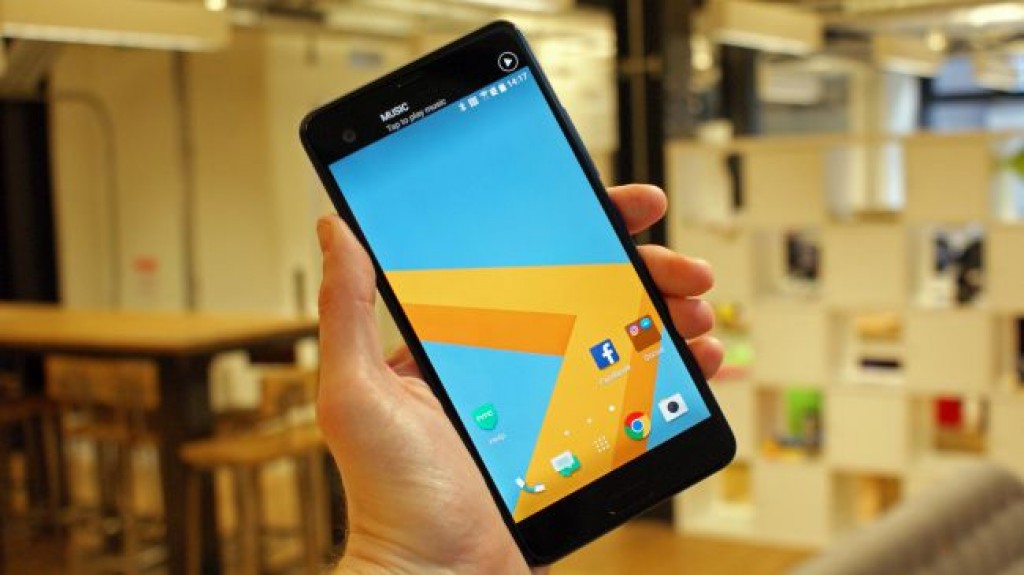
Having that little curve is a nice feeling when it’s shoved against the palm. It’s packed with some decent specs too, with the Qualcomm Snapdragon 821 combined with 4GB of RAM – not flagship level, but more than good enough for most tasks you can think of, if not all.
However, the feel of the glass in the hand is, well, a touch on the light side. It’s not quite plasticky under caress, but at the same time it lacks the raw strength of metal. This is an aesthetic choice, and it works in that respect – it just depends whether you like your phones to be lightweight or offer a bit more heft, depending on the price.

The buttons are well-placed for the most part – the larger size of the phone makes it harder to hit the volume rocker switch, but the same fingerprint scanner HTC has used in past years is on the front as a non-movable home button, and if it’s as good as before then unlocking the phone should be a delightfully swift process.
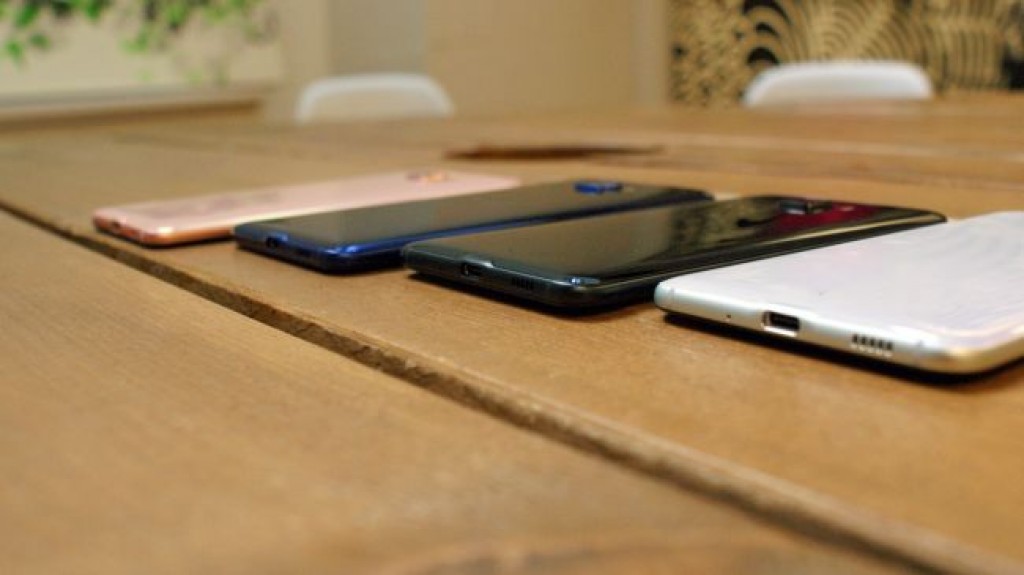
You’ll be able to buy this phone in black, white, blue or pink – although that last version is called ‘Cosmetic Pink’ in the marketing materials. Come on HTC: women don’t need to be told which phone is designed for them. We know pink phones can sell well, so just call it that and don’t make the gender targeting so overt….
Screen
The screen is one of the more impressive parts of this phone – and actually that should be screens, as there’s not one, but two displays on board: a large Super LCD 5.7-inch screen, with QHD (2560 x 1440) resolution, and a smaller 2.05-inch (160 x 1040) resolution display above. It’s been done before, by LG on the LG V10 and LG V20, but this is the first time we’ve seen such an arrangement on a more global device.
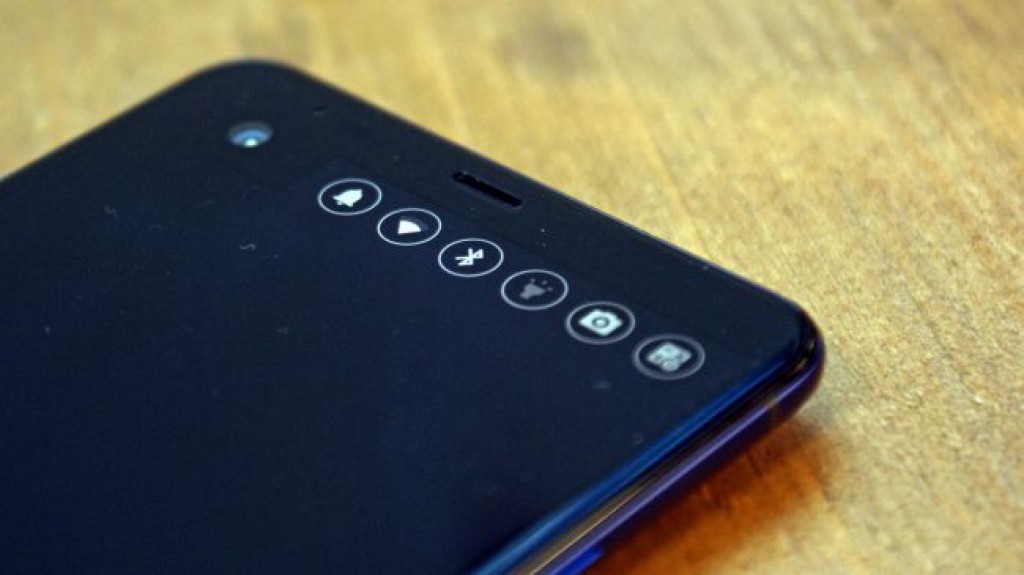
The function of this mini screen is to save you from having to fire up the phone all the time, and, for example, preventing unnecessary distractions when you’re playing a game – your calendar invites or message previews will appear there, rather than being overlaid on what you’re viewing.
Like a regular display this screen is also touch-sensitive, enabling you to swipe through your favorite contacts, quick settings, top apps and more.

It’s not the easiest to glide your finger over, as it feels like you’ll touch the main display, but perhaps that’s already been managed out by HTC, as we didn’t experience any mis-taps in our hands-on time.
New AI
This screen will also be used to display the HTC Sense Companion (HSC) information, through which your phone will work out how you can use it more effectively.
The initial offerings here are pretty rudimentary. Among other things HSC will work out your favorite people and suggest alterations as time goes by, point out when it’s time to take an umbrella if rain is forecast after days of brilliant sunshine, and check whether you really want that alarm or meeting when there’s a national holiday coming up.
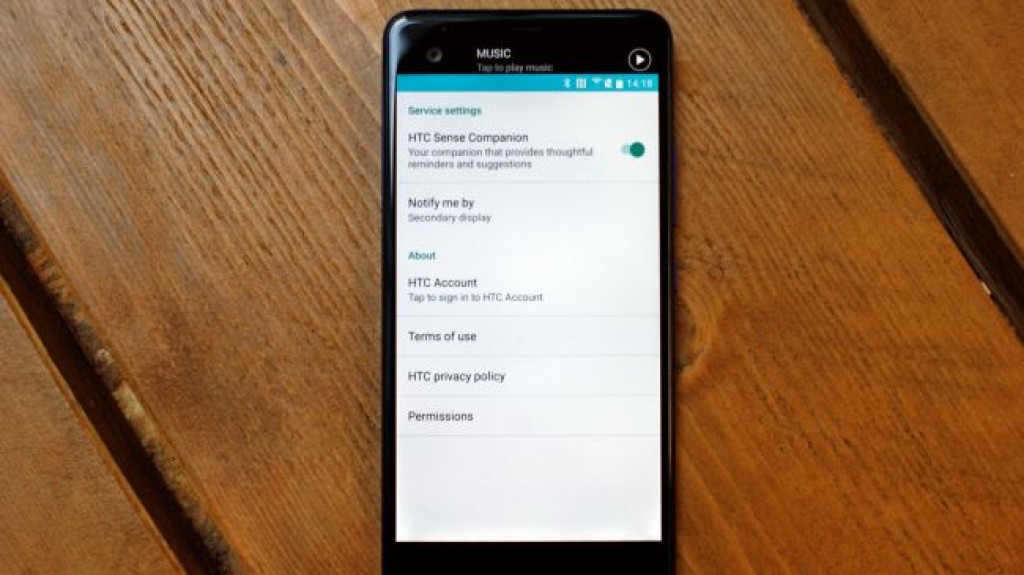
None of that seems particularly ground-breaking, although this is a very early edition of the software, which HTC will presumable iterate on in the future. However, one area which sounds potentially interesting is battery management.
Where some phones will automatically go into low-power mode when hitting a certain percentage, HTC says its AI companion will work out when you usually get home from work, or habitually need power, and offer appropriate prompts, such as suggesting that you root out a charger or take a power bank with you when you’re on the go.

If a quick recharge isn’t possible the phone will start to disable poorly-performing apps and limit the performance of the phone, to try and eke out some more time until you can get to a charger.
Battery
You won’t be able to use any old charger, however, as this phone is USB-C, the more impressive but still nascent port option for charging the 3000mAh battery on board.
A full charge should be enough to see you through the day (although with HTC you’re never entirely sure, and we’ll be sure to test this in our full review).

The HTC U Ultra is always listening to you, thanks to four omnidirectional microphones which HTC claims can record over longer distances than other phones on the market right now, and which will be able to register your voice commands as long as the phone is nearby.
This ‘always on’ listening mode will apparently drain less than 1% of the battery life, so you won’t be constantly rushing to your charger. That performance will be useful, as the HTC U Ultra is running on Android 7 with its similar HTC Sense overlay, with Google Now baked right in.

Say your wake-up phrase to the phone and you can interact with Now – which is presumably why HTC has decided not to unveil its own version of Cortana or Siri when creating its own AI system.
Your voice can even be used to biometrically unlock the phone – HTC says this feature can’t be duped, even by an audio recording of your speech, but we’ll be testing that claim out when we get our review device.
Audio and camera
Audio performance, as ever with HTC, should be superb on the U Ultra, with Hi-Res audio playback coming through the bundled USonic headphones. BoomSound is also still present, as a stereo speaker from the earpiece and firing out the bottom of the phone for a loud sound.
Hi-Res buds are nothing new for HTC, as they came with the HTC 10 and 10 Evo, but these will also allow you to create a personalised listening profile, to make your tunes sound as strong as possible for your own hearing abilities.
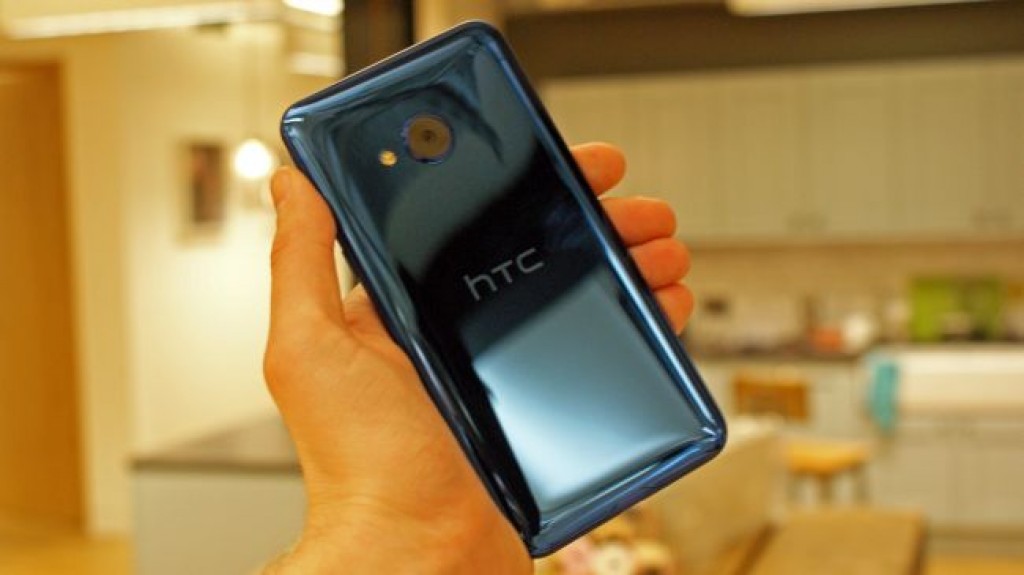
You won’t be able to use your own headphones unless you’ve got some USB-C cans… there’s no headphone jack here again, as we move with increasing rapidity into the jack-free smartphone era.
Hi-Res audio recording is supported by the new four microphone setup, with HTC claiming the extra recording capacity will allow for 3D sound – this is something we’re sure we’ve heard countless times before, but the hardware in here will definitely support some decent sound capture, and augment 4K video nicely.

The camera is a 12MP affair, and is essentially the same one seen on the HTC 10. This means it should offer strong performance in low light (thanks to the f/1.8 aperture), automatic HDR, raw support and Ultrapixel 2 technology, with larger pixels for enhanced low-light capture.
Curiously, the front-facing 16MP sensor (we know – larger than the back) is also Ultrapixel-enabled, but combines four pixels into one to create a brighter image. We queried why HTC wouldn’t do this on the rear as well, but it wouldn’t comment – presumably it’s satisfied with the size of those pixels.
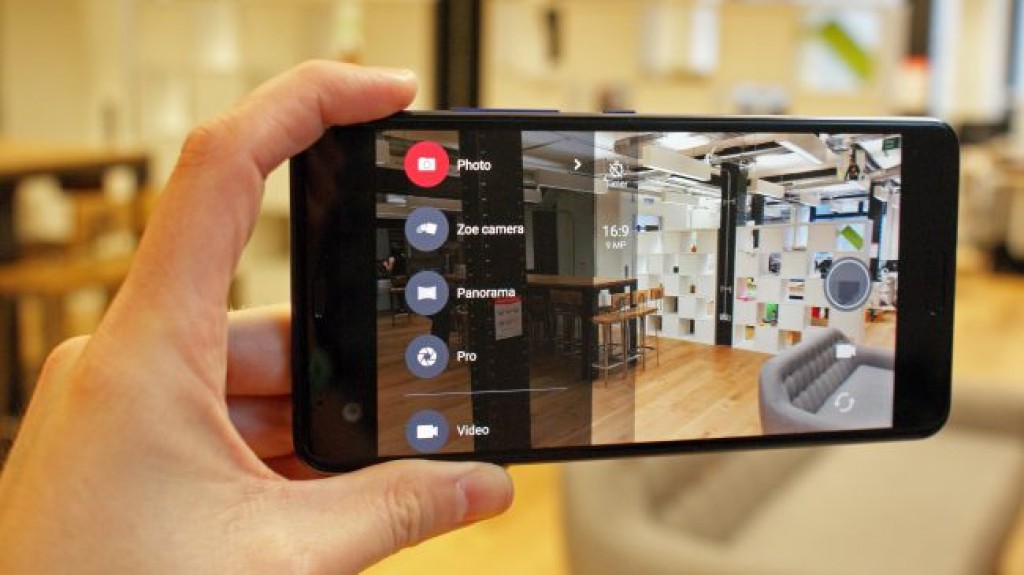
Picture snapping was swift and the results bright – the photos were sharp enough, although if the U Ultra is anything like the HTC 10 the real benefits will come when you shoot in raw mode, and process the resulting images through the inbuilt editor – you’ll get much better pics that way.
HTC U Ultra release date and price
In terms of the HTC U Ultra release date, we’re expecting the phone to land in Asia within a month, and in Europe around the middle of February – so it won’t be long before you’ll be able to get your hands on this new handset.
Early verdict
The HTC U Ultra is, really, the HTC 10 Ultra – a more powerful, phablet version of that flagship phone from 2016, which gives us hope that we’re still going to see the HTC 11 later this year.
The U Ultra has all the specs we’re looking for in a phone that’s just below the cost of a flagship (although we’ve still not seen the price), and is covered in an attractive coating that only gets divisive once picked up.
The power on board is impressive, although we’re not convinced that the HTC Sense Companion will be a useful AI out of the box.
Depending on the price, this could be a strong phone from HTC – although whether it’s a similarly strong seller depends to some extent on the effectiveness of the company’s marketing, something the brand hasn’t been great at in the past.
Sourse: techradar.com





































